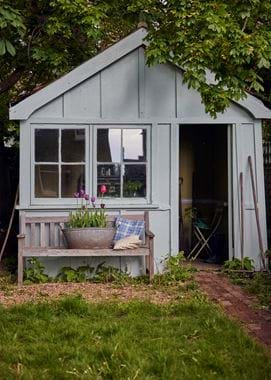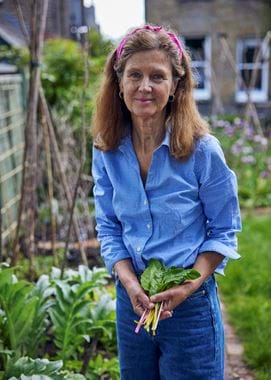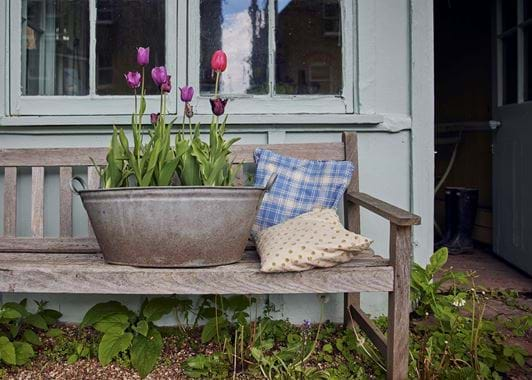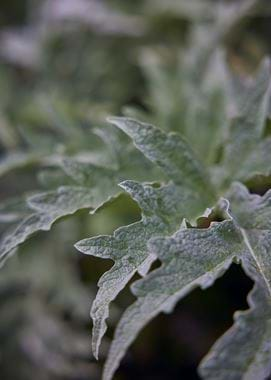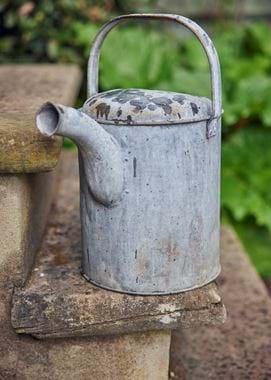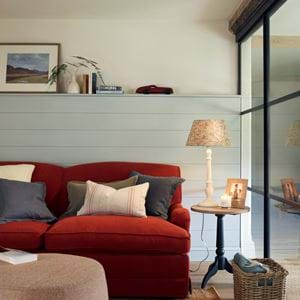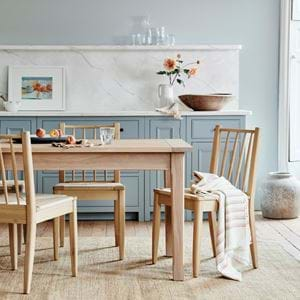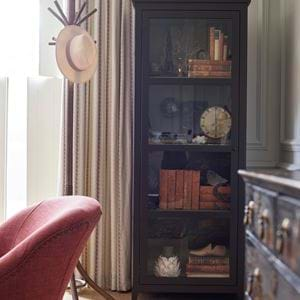In the garden with Jane: the sustainable garden
In the garden with Jane: the sustainable garden
We’ve long admired author and designer Jane Cumberbatch’s style. Her way of living – which she calls ‘Pure Style’ – is all about simple beauties and pleasures, underpinned by a sense of timelessness and always with affordability in mind. So we were thrilled when she invited us into her garden to talk about how she brings Pure Style to outdoor spaces, ahead of the publication of her newest book, ‘Pure Style in the Garden’ which comes out in August. Here – and over on our IGTV – she suggests ways that you can make your garden a sustainable as well as a beautiful place, and stay tuned for part two all about her approach to growing vegetables, herbs and cut flowers at home.
Gardening is all about being resourceful anyway, so it’s no great leap to be considerate of ideas that are more sustainable and helpful to the environment. And this, I suppose, is how I like to live generally, reusing furniture and fabrics, eating local produce and avoiding mass-produced plastic. I try to garden without waste, choosing plants that come back year after year, plants that spread and re-seed and plants that flower for long periods of the year.
I count on my perennials: various bushes of lavender (and rosemary), which not only provide evergreen colour throughout the year, but also beautiful, purple, scented flower spikes in the summer – and of course attract pollinators like bees and butterflies. I have a deep pink peony that came from my late mother’s garden, from a clump of tubers which I divided between me and my sister; a lovely way to remember her each spring when the buds unfurl to reveal exuberant multi-petalled blooms. Similarly, the globe thistles and roses reward each year with scented delights. It’s also reassuring to know that the clumps of yellow narcissi in the grass under the apple tree will appear again next year as they have done for the last 15 or so since they were planted. Once flowering is over, I deadhead the plants and knot the leaves together to look more tidy and let them decay naturally. In this way, all the nutrients go back into the bulb.
It’s resourceful and more sustainable to take cuttings and seeds from what you already have in the garden. I’ve started a new bay bush in this way and the wild rocket is prolific enough to produce seed for me and to also share between my daughters.
It’s good to grow native plants (honeysuckle, hawthorn, lily of the valley and wild bluebells, for example); some pollinators can only take pollen and nectar from a small range, and these plants are usually ones that have been native to the UK for many centuries. But regardless of plant origin, the more flowers your garden can offer throughout the year, the greater the number of bees, hoverflies and other pollinating insects it will attract and support. Choose simple, more natural looking flower shapes (pompom alliums, purple globe thistles and the white bells of comfrey plants are all good). More showy, highly bred ornamental flowers are hard for honeybees which have shorter tongues than bumblebees or butterflies. Bees see in the ultraviolet spectrum which makes blue, purple and white plants especially attractive to them. Red flowers are the least attractive. Plants that are especially beneficial for bees and butterflies include: campanula, comfrey, allium, borage, catmint, hollyhock, globe thistle, poppy, sweet pea, thyme, buddleia, cornflower, echinacea, foxglove, honeysuckle, lavender and nasturtium. Try also to have plants that have long flowering periods, such as verbena, from which you can expect 20 weeks of non-stop flowers. (By the way, although it’s a perennial with a short life span of two to three years, verbena self-seeds and sends out new plants very efficiently.)
Try to avoid pesticides. Overuse is the reason why our bee and insect populations have been drastically reduced. You can wash off aphids with a hose, but remember they’re also food for the blue tits and other birds that dart around the garden. The slugs and snails clearly need more predators than my garden can offer (urban birds are spoilt for choice maybe) but I resist chemical pellets because they’re poisonous to any bird that might eat the dead insect. Beer traps are quite effective, as is a slug hunt by torchlight at night. As for fertiliser, make a natural one from comfrey leaves – a common garden occupant – by collecting and soaking them in a bucket of water for up to a month, before draining off the liquid and using it diluted in 1:10 parts water. It stinks but is a wonderful food for flowers and vegetables.
As our summers become hotter, water saving ideas and drought tolerant plants are key. We can take more steps to ensure that the ground is sufficiently water retentive by digging in good mulch to help the soil absorb as much water as it can. Investing in a water butt and a few watering cans is a good way to collect the results of a downpour. On hot days, water in the early morning and again in late evening to avoid excessive evaporation. Some of my favourite drought-tolerant plants include lavender, sage, verbena, agapanthus, euphorbia and alliums. Consider planting a fig tree too: they’re well suited to long hot summers and the leaves are fragrant. Long-flowering annuals like zinnias are also drought tolerant, low maintenance and give a brilliant show of colour for weeks with regular deadheading, and they’re butterfly magnets too.
And let’s not forget that we can also be resourceful and sustainable in the garden by using good quality second hand garden tools rather than cheap plastic ones. The same goes for garden furniture together with reclaimed materials for surfaces such as paths and patios.
Jane Cumberbatch is a designer, stylist and writer, and the originator of the philosophy ‘Pure Style’ which emphasises simplicity, thrift and longevity. She has worked as decorating editor for House and Garden magazine, ELLE Decoration and the Sunday Telegraph magazine. She’s also the author of many books, including ‘Pure Style’, ‘Pure Colour’ and the cookbook ‘Pure Style: Recipes for Every Day’. You can now order her newest book, ‘Pure Style in the Garden’, published by Pimpernel Press, at Bookshop.org.

